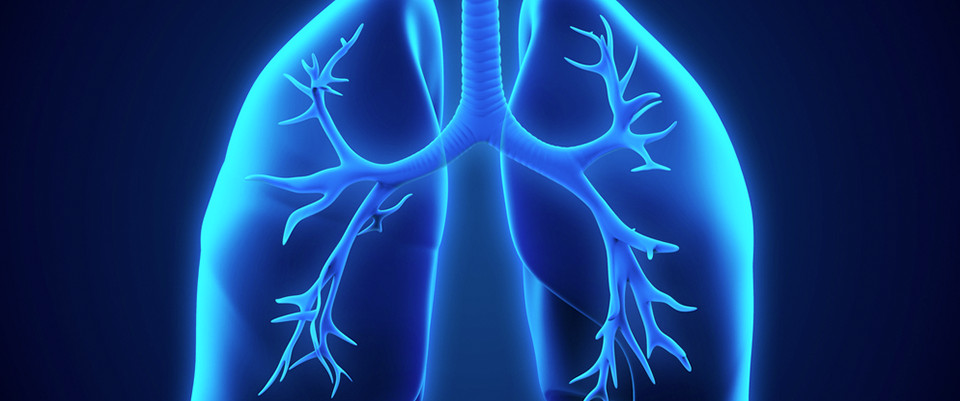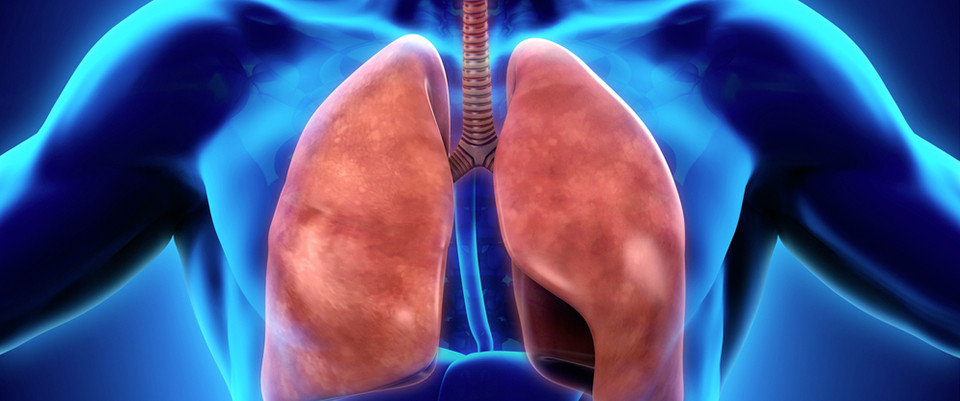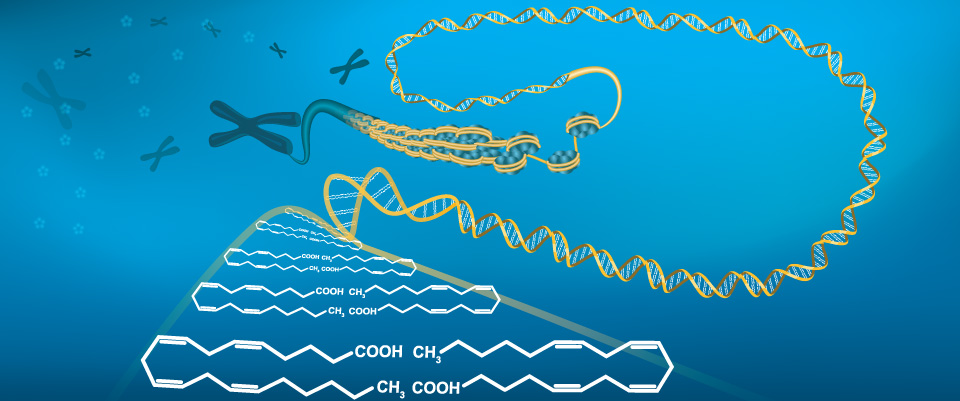PubMed
Protein-bound uremic toxins impaired mitochondrial dynamics and functions.
Related Articles
Protein-bound uremic toxins impaired mitochondrial dynamics and functions.
Oncotarget. 2017 Sep 29;8(44):77722-77733
Authors: Sun CY, Cheng ML, Pan HC, Lee JH, Lee CC
Abstract
Protein-bound uremic toxins, indoxyl sulfate and p-cresol sulfate, increase oxidative stress and adversely affect chronic kidney disease progression and cardiovascular complications. In this study, we examined whether mitochondria are the target of indoxyl sulfate and p-cresol sulfate intoxication in vivo and in vitro. The kidneys of 10-week-old male B-6 mice with ½-nephrectomy treated with indoxyl sulfate and p-cresol sulfate were used for the animal study. Cultured human renal tubular cells were used for the in vitro study. Our results indicated that indoxyl sulfate and p-cresol sulfate impaired aerobic and anaerobic metabolism in vivo and in vitro. Indoxyl sulfate and p-cresol sulfate caused mitochondrial fission by modulating the expression of mitochondrial fission-fusion proteins. Mitochondrial dysfunction and impaired biogenesis could be protected by treatment with antioxidants. The in vitro study also demonstrated that indoxyl sulfate and p-cresol sulfate reduced mitochondrial mass by activating autophagic machinery. In summary, our study suggests that mitochondrial injury is one of the major pathological mechanisms for uremic intoxication, which is related to chronic kidney disease and its complications.
PMID: 29100420 [PubMed]
metabolomics; +24 new citations
24 new pubmed citations were retrieved for your search.
Click on the search hyperlink below to display the complete search results:
metabolomics
These pubmed results were generated on 2017/11/04PubMed comprises more than millions of citations for biomedical literature from MEDLINE, life science journals, and online books.
Citations may include links to full-text content from PubMed Central and publisher web sites.
metabolomics; +24 new citations
24 new pubmed citations were retrieved for your search.
Click on the search hyperlink below to display the complete search results:
metabolomics
These pubmed results were generated on 2017/11/04PubMed comprises more than millions of citations for biomedical literature from MEDLINE, life science journals, and online books.
Citations may include links to full-text content from PubMed Central and publisher web sites.
Metabolomics based predictive biomarker model of ARDS: A systemic measure of clinical hypoxemia.
Metabolomics based predictive biomarker model of ARDS: A systemic measure of clinical hypoxemia.
PLoS One. 2017;12(11):e0187545
Authors: Sinha N, Viswan A, Singh C, Rai RK, Azim A, Baronia AK
Abstract
Despite advancements in ventilator technologies, lung supportive and rescue therapies, the outcome and prognostication in acute respiratory distress syndrome (ARDS) remains incremental and ambiguous. Metabolomics is a potential insightful measure to the diagnostic approaches practiced in critical disease settings. In our study patients diagnosed with mild and moderate/severe ARDS clinically governed by hypoxemic P/F ratio between 100-300 but with indistinct molecular phenotype were discriminated employing nuclear magnetic resonance (NMR) based metabolomics of mini bronchoalveolar lavage fluid (mBALF). Resulting biomarker prototype comprising six metabolites was substantiated highlighting ARDS susceptibility/recovery. Both the groups (mild and moderate/severe ARDS) showed distinct biochemical profile based on 83.3% classification by discriminant function analysis and cross validated accuracy of 91% using partial least squares discriminant analysis as major classifier. The predictive performance of narrowed down six metabolites were found analogous with chemometrics. The proposed biomarker model consisting of six metabolites proline, lysine/arginine, taurine, threonine and glutamate were found characteristic of ARDS sub-stages with aberrant metabolism observed mainly in arginine, proline metabolism, lysine synthesis and so forth correlating to diseased metabotype. Thus NMR based metabolomics has provided new insight into ARDS sub-stages and conclusively a precise biomarker model proposed, reflecting underlying metabolic dysfunction aiding prior clinical decision making.
PMID: 29095932 [PubMed - in process]
"Omic" investigations of protozoa and worms for a deeper understanding of the human gut "parasitome".
"Omic" investigations of protozoa and worms for a deeper understanding of the human gut "parasitome".
PLoS Negl Trop Dis. 2017 Nov;11(11):e0005916
Authors: Marzano V, Mancinelli L, Bracaglia G, Del Chierico F, Vernocchi P, Di Girolamo F, Garrone S, Tchidjou Kuekou H, D'Argenio P, Dallapiccola B, Urbani A, Putignani L
Abstract
The human gut has been continuously exposed to a broad spectrum of intestinal organisms, including viruses, bacteria, fungi, and parasites (protozoa and worms), over millions of years of coevolution, and plays a central role in human health. The modern lifestyles of Western countries, such as the adoption of highly hygienic habits, the extensive use of antimicrobial drugs, and increasing globalisation, have dramatically altered the composition of the gut milieu, especially in terms of its eukaryotic "citizens." In the past few decades, numerous studies have highlighted the composition and role of human intestinal bacteria in physiological and pathological conditions, while few investigations exist on gut parasites and particularly on their coexistence and interaction with the intestinal microbiota. Studies of the gut "parasitome" through "omic" technologies, such as (meta)genomics, transcriptomics, proteomics, and metabolomics, are herein reviewed to better understand their role in the relationships between intestinal parasites, host, and resident prokaryotes, whether pathogens or commensals. Systems biology-based profiles of the gut "parasitome" under physiological and severe disease conditions can indeed contribute to the control of infectious diseases and offer a new perspective of omics-assisted tropical medicine.
PMID: 29095820 [PubMed - in process]
Mass spectrometry based metabolomics: a novel analytical technique for detecting metabolic syndrome?
Mass spectrometry based metabolomics: a novel analytical technique for detecting metabolic syndrome?
Bioanalysis. 2017 Nov 02;:
Authors: Sallese A, Zhu J
PMID: 29095044 [PubMed - as supplied by publisher]
Metabolomics for the masses: The future of metabolomics in a personalized world.
Metabolomics for the masses: The future of metabolomics in a personalized world.
New Horiz Transl Med. 2017 Mar;3(6):294-305
Authors: Trivedi DK, Hollywood KA, Goodacre R
Abstract
Current clinical practices focus on a small number of biochemical directly related to the pathophysiology with patients and thus only describe a very limited metabolome of a patient and fail to consider the interations of these small molecules. This lack of extended information may prevent clinicians from making the best possible therapeutic interventions in sufficient time to improve patient care. Various post-genomics '('omic)' approaches have been used for therapeutic interventions previously. Metabolomics now a well-established'omics approach, has been widely adopted as a novel approach for biomarker discovery and in tandem with genomics (especially SNPs and GWAS) has the potential for providing systemic understanding of the underlying causes of pathology. In this review, we discuss the relevance of metabolomics approaches in clinical sciences and its potential for biomarker discovery which may help guide clinical interventions. Although a powerful and potentially high throughput approach for biomarker discovery at the molecular level, true translation of metabolomics into clinics is an extremely slow process. Quicker adaptation of biomarkers discovered using metabolomics can be possible with novel portable and wearable technologies aided by clever data mining, as well as deep learning and artificial intelligence; we shall also discuss this with an eye to the future of precision medicine where metabolomics can be delivered to the masses.
PMID: 29094062 [PubMed]
Metabolomics guided pathway analysis reveals link between cancer metastasis, cholesterol sulfate, and phospholipids.
Metabolomics guided pathway analysis reveals link between cancer metastasis, cholesterol sulfate, and phospholipids.
Cancer Metab. 2017;5:9
Authors: Johnson CH, Santidrian AF, LeBoeuf SE, Kurczy ME, Rattray NJW, Rattray Z, Warth B, Ritland M, Hoang LT, Loriot C, Higa J, Hansen JE, Felding BH, Siuzdak G
Abstract
Background: Cancer cells that enter the metastatic cascade require traits that allow them to survive within the circulation and colonize distant organ sites. As disseminating cancer cells adapt to their changing microenvironments, they also modify their metabolism and metabolite production.
Methods: A mouse xenograft model of spontaneous tumor metastasis was used to determine the metabolic rewiring that occurs between primary cancers and their metastases. An "autonomous" mass spectrometry-based untargeted metabolomic workflow with integrative metabolic pathway analysis revealed a number of differentially regulated metabolites in primary mammary fat pad (MFP) tumors compared to microdissected paired lung metastases. The study was further extended to analyze metabolites in paired normal tissues which determined the potential influence of metabolites from the microenvironment.
Results: Metabolomic analysis revealed that multiple metabolites were increased in metastases, including cholesterol sulfate and phospholipids (phosphatidylglycerols and phosphatidylethanolamine). Metabolite analysis of normal lung tissue in the mouse model also revealed increased levels of these metabolites compared to tissues from normal MFP and primary MFP tumors, indicating potential extracellular uptake by cancer cells in lung metastases. These results indicate a potential functional importance of cholesterol sulfate and phospholipids in propagating metastasis. In addition, metabolites involved in DNA/RNA synthesis and the TCA cycle were decreased in lung metastases compared to primary MFP tumors.
Conclusions: Using an integrated metabolomic workflow, this study identified a link between cholesterol sulfate and phospholipids, metabolic characteristics of the metastatic niche, and the capacity of tumor cells to colonize distant sites.
PMID: 29093815 [PubMed]
Integrative field scale phenotyping for investigating metabolic components of water stress within a vineyard.
Integrative field scale phenotyping for investigating metabolic components of water stress within a vineyard.
Plant Methods. 2017;13:90
Authors: Gago J, Fernie AR, Nikoloski Z, Tohge T, Martorell S, Escalona JM, Ribas-Carbó M, Flexas J, Medrano H
Abstract
Background: There is currently a high requirement for field phenotyping methodologies/technologies to determine quantitative traits related to crop yield and plant stress responses under field conditions.
Methods: We employed an unmanned aerial vehicle equipped with a thermal camera as a high-throughput phenotyping platform to obtain canopy level data of the vines under three irrigation treatments. High-resolution imagery (< 2.5 cm/pixel) was employed to estimate the canopy conductance (gc ) via the leaf energy balance model. In parallel, physiological stress measurements at leaf and stem level as well as leaf sampling for primary and secondary metabolome analysis were performed.
Results: Aerial gc correlated significantly with leaf stomatal conductance (gs ) and stem sap flow, benchmarking the quality of our remote sensing technique. Metabolome profiles were subsequently linked with gc and gs via partial least square modelling. By this approach malate and flavonols, which have previously been implicated to play a role in stomatal function under controlled greenhouse conditions within model species, were demonstrated to also be relevant in field conditions.
Conclusions: We propose an integrative methodology combining metabolomics, organ-level physiology and UAV-based remote sensing of the whole canopy responses to water stress within a vineyard. Finally, we discuss the general utility of this integrative methodology for broad field phenotyping.
PMID: 29093742 [PubMed]
Dynamic Labeling Reveals Temporal Changes in Carbon Re-Allocation within the Central Metabolism of Developing Apple Fruit.
Dynamic Labeling Reveals Temporal Changes in Carbon Re-Allocation within the Central Metabolism of Developing Apple Fruit.
Front Plant Sci. 2017;8:1785
Authors: Beshir WF, Mbong VBM, Hertog MLATM, Geeraerd AH, Van den Ende W, Nicolaï BM
Abstract
In recent years, the application of isotopically labeled substrates has received extensive attention in plant physiology. Measuring the propagation of the label through metabolic networks may provide information on carbon allocation in sink fruit during fruit development. In this research, gas chromatography coupled to mass spectrometry based metabolite profiling was used to characterize the changing metabolic pool sizes in developing apple fruit at five growth stages (30, 58, 93, 121, and 149 days after full bloom) using (13)C-isotope feeding experiments on hypanthium tissue discs. Following the feeding of [U-(13)C]glucose, the (13)C-label was incorporated into the various metabolites to different degrees depending on incubation time, metabolic pathway activity, and growth stage. Evidence is presented that early in fruit development the utilization of the imported sugars was faster than in later developmental stages, likely to supply the energy and carbon skeletons required for cell division and fruit growth. The declined (13)C-incorporation into various metabolites during growth and maturation can be associated with the reduced metabolic activity, as mirrored by the respiratory rate. Moreover, the concentration of fructose and sucrose increased during fruit development, whereas concentrations of most amino and organic acids and polyphenols declined. In general, this study showed that the imported compounds play a central role not only in carbohydrate metabolism, but also in the biosynthesis of amino acid and related protein synthesis and secondary metabolites at the early stage of fruit development.
PMID: 29093725 [PubMed]
Spatiotemporal analysis of tropical disease research combining Europe PMC and affiliation mapping web services.
Spatiotemporal analysis of tropical disease research combining Europe PMC and affiliation mapping web services.
Trop Med Health. 2017;45:33
Authors: Palmblad M, Torvik VI
Abstract
Background: Tropical medicine appeared as a distinct sub-discipline in the late nineteenth century, during a period of rapid European colonial expansion in Africa and Asia. After a dramatic drop after World War II, research on tropical diseases have received more attention and research funding in the twenty-first century.
Methods: We used Apache Taverna to integrate Europe PMC and MapAffil web services, containing the spatiotemporal analysis workflow from a list of PubMed queries to a list of publication years and author affiliations geoparsed to latitudes and longitudes. The results could then be visualized in the Quantum Geographic Information System (QGIS).
Results: Our workflows automatically matched 253,277 affiliations to geographical coordinates for the first authors of 379,728 papers on tropical diseases in a single execution. The bibliometric analyses show how research output in tropical diseases follow major historical shifts in the twentieth century and renewed interest in and funding for tropical disease research in the twenty-first century. They show the effects of disease outbreaks, WHO eradication programs, vaccine developments, wars, refugee migrations, and peace treaties.
Conclusions: Literature search and geoparsing web services can be combined in scientific workflows performing a complete spatiotemporal bibliometric analyses of research in tropical medicine. The workflows and datasets are freely available and can be used to reproduce or refine the analyses and test specific hypotheses or look into particular diseases or geographic regions. This work exceeds all previously published bibliometric analyses on tropical diseases in both scale and spatiotemporal range.
PMID: 29093641 [PubMed]
Loss of miR-141/200c ameliorates hepatic steatosis and inflammation by reprogramming multiple signaling pathways in NASH.
Loss of miR-141/200c ameliorates hepatic steatosis and inflammation by reprogramming multiple signaling pathways in NASH.
JCI Insight. 2017 Nov 02;2(21):
Authors: Tran M, Lee SM, Shin DJ, Wang L
Abstract
Accumulation of lipid droplets and inflammatory cell infiltration is the hallmark of nonalcoholic steatohepatitis (NASH). The roles of noncoding RNAs in NASH are less known. We aim to elucidate the function of miR-141/200c in diet-induced NASH. WT and miR-141/200c-/- mice were fed a methionine and choline deficient (MCD) diet for 2 weeks to assess markers of steatosis, liver injury, and inflammation. Hepatic miR-141 and miR-200c RNA levels were highly induced in human patients with NASH fatty liver and in WT MCD mice. miR-141/200c-/- MCD mice had reduced liver weights and triglyceride (TG) levels, which was associated with increased microsomal TG transfer protein (MTTP) and PPARα but reduced SREBP1c and FAS expression. Inflammation was attenuated and F4/80 macrophage activation was suppressed in miR-141/200c-/- mice, as evidenced by decreased serum aminotransferases and IL-6 and reduced hepatic proinflammatory, neutrophil, and profibrotic genes. Treatment with LPS in BM-derived macrophages isolated from miR-200c/141-/- mice polarized macrophages toward the M2 antiinflammatory state by increasing Arg1 and IL-10 levels while decreasing the M1 marker iNOS. In addition, elevated phosphorylated AMPK (p-AMPK), p-AKT, and p-GSK3β and diminished TLR4 and p-mTOR/p-4EBP1 proteins were observed. Lipidomics and metabolomics revealed alterations of TG and phosphatidylcholine (PC) lipid species by miR-141/200c deficiency. In summary, miR-141/200c deficiency diminished NASH-associated hepatic steatosis and inflammation by reprogramming lipid and inflammation signaling pathways.
PMID: 29093267 [PubMed - as supplied by publisher]
High intracellular c-di-GMP levels antagonize quorum sensing and virulence gene expression in Burkholderia cenocepacia H111.
Related Articles
High intracellular c-di-GMP levels antagonize quorum sensing and virulence gene expression in Burkholderia cenocepacia H111.
Microbiology. 2017 May;163(5):754-764
Authors: Schmid N, Suppiger A, Steiner E, Pessi G, Kaever V, Fazli M, Tolker-Nielsen T, Jenal U, Eberl L
Abstract
The opportunistic human pathogen Burkholderia cenocepacia H111 uses two chemically distinct signal molecules for controlling gene expression in a cell density-dependent manner: N-acyl-homoserine lactones (AHLs) and cis-2-dodecenoic acid (BDSF). Binding of BDSF to its cognate receptor RpfR lowers the intracellular c-di-GMP level, which in turn leads to differential expression of target genes. In this study we analysed the transcriptional profile of B. cenocepacia H111 upon artificially altering the cellular c-di-GMP level. One hundred and eleven genes were shown to be differentially expressed, 96 of which were downregulated at a high c-di-GMP concentration. Our analysis revealed that the BDSF, AHL and c-di-GMP regulons overlap for the regulation of 24 genes and that a high c-di-GMP level suppresses expression of AHL-regulated genes. Phenotypic analyses confirmed changes in the expression of virulence factors, the production of AHL signal molecules and the biosynthesis of different biofilm matrix components upon altered c-di-GMP levels. We also demonstrate that the intracellular c-di-GMP level determines the virulence of B. cenocepacia to Caenorhabditis elegans and Galleria mellonella.
PMID: 28463102 [PubMed - indexed for MEDLINE]
Analysis of the Biotechnological Potential of a Lentinus crinitus Isolate in the Light of Its Secretome.
Related Articles
Analysis of the Biotechnological Potential of a Lentinus crinitus Isolate in the Light of Its Secretome.
J Proteome Res. 2016 Dec 02;15(12):4557-4568
Authors: Cambri G, de Sousa MM, Fonseca DM, Marchini F, da Silveira JL, Paba J
Abstract
Analysis of fungal secretomes is a prospection tool for the discovery of new catalysts with biotechnological applications. Since enzyme secretion is strongly modulated by environmental factors, evaluation of growth conditions is of utmost importance to achieve optimal enzyme production. In this work, a nonsequenced wood-rotting fungus, Lentinus crinitus, was used for secretome analysis by enzymatic assays and a proteomics approach. Enzyme production was assessed after the fungus was cultured in seven different carbon sources and three nitrogen-containing compounds. The biomass yields and secreted protein arrays differed drastically among growing conditions. A mixture of secreted extracts derived from solid and liquid cultures was inspected by shotgun mass spectrometry and two-dimensional gel electrophoresis (2-DE) prior to analysis via LC-MS/MS. Proteins were identified using mass spectrometry (MS)-driven BLAST. The spectrum of secreted proteins comprised CAZymes, oxidase/reductases, proteases, and lipase/esterases. Although preseparation by 2-DE improved the number of identifications (162) compared with the shotgun approach (98 identifications), the two strategies revealed similar protein patterns. Culture media with reduced water content stimulated the expression of oxidases/reductases, while hydrolases were induced during submerged fermentation. The diversity of proteins observed within both the CAZyme and oxidoreductase groups revealed in this fungus a powerful arsenal of enzymes dedicated to the breakdown and consumption of lignocellulose.
PMID: 27796094 [PubMed - indexed for MEDLINE]
Biochemometrics to Identify Synergists and Additives from Botanical Medicines: A Case Study with Hydrastis canadensis (Goldenseal).
Biochemometrics to Identify Synergists and Additives from Botanical Medicines: A Case Study with Hydrastis canadensis (Goldenseal).
J Nat Prod. 2017 Nov 01;:
Authors: Britton ER, Kellogg JJ, Kvalheim OM, Cech NB
Abstract
A critical challenge in the study of botanical natural products is the difficulty of identifying multiple compounds that may contribute additively, synergistically, or antagonistically to biological activity. Herein, it is demonstrated how combining untargeted metabolomics with synergy-directed fractionation can be effective toward accomplishing this goal. To demonstrate this approach, an extract of the botanical goldenseal (Hydrastis canadensis) was fractionated and tested for its ability to enhance the antimicrobial activity of the alkaloid berberine (4) against the pathogenic bacterium Staphylococcus aureus. Bioassay data were combined with untargeted mass spectrometry-based metabolomics data sets (biochemometrics) to produce selectivity ratio (SR) plots, which visually show which extract components are most strongly associated with the biological effect. Using this approach, the new flavonoid 3,3'-dihydroxy-5,7,4'-trimethoxy-6,8-C-dimethylflavone (29) was identified, as were several flavonoids known to be active. When tested in combination with 4, 29 lowered the IC50 of 4 from 132.2 ± 1.1 μM to 91.5 ± 1.1 μM. In isolation, 29 did not demonstrate antimicrobial activity. The current study highlights the importance of fractionation when utilizing metabolomics for identifying bioactive components from botanical extracts and demonstrates the power of SR plots to help merge and interpret complex biological and chemical data sets.
PMID: 29091439 [PubMed - as supplied by publisher]
Metabolism of Citrate and Other Carboxylic Acids in Erythrocytes As a Function of Oxygen Saturation and Refrigerated Storage.
Related Articles
Metabolism of Citrate and Other Carboxylic Acids in Erythrocytes As a Function of Oxygen Saturation and Refrigerated Storage.
Front Med (Lausanne). 2017;4:175
Authors: Nemkov T, Sun K, Reisz JA, Yoshida T, Dunham A, Wen EY, Wen AQ, Roach RC, Hansen KC, Xia Y, D'Alessandro A
Abstract
State-of-the-art proteomics technologies have recently helped to elucidate the unanticipated complexity of red blood cell metabolism. One recent example is citrate metabolism, which is catalyzed by cytosolic isoforms of Krebs cycle enzymes that are present and active in mature erythrocytes and was determined using quantitative metabolic flux analysis. In previous studies, we reported significant increases in glycolytic fluxes in red blood cells exposed to hypoxia in vitro or in vivo, an observation relevant to transfusion medicine owing to the potential benefits associated with hypoxic storage of packed red blood cells. Here, using a combination of steady state and quantitative tracing metabolomics experiments with (13)C1,2,3-glucose, (13)C6-citrate, (13)C5(15)N2-glutamine, and (13)C1-aspartate via ultra-high performance liquid chromatography coupled on line with mass spectrometry, we observed that hypoxia in vivo and in vitro promotes consumption of citrate and other carboxylates. These metabolic reactions are theoretically explained by the activity of cytosolic malate dehydrogenase 1 and isocitrate dehydrogenase 1 (abundantly represented in the red blood cell proteome), though moonlighting functions of additional enzymes cannot be ruled out. These observations enhance understanding of red blood cell metabolic responses to hypoxia, which could be relevant to understand systemic physiological and pathological responses to high altitude, ischemia, hemorrhage, sepsis, pulmonary hypertension, or hemoglobinopathies. Results from this study will also inform the design and testing of novel additive solutions that optimize red blood cell storage under oxygen-controlled conditions.
PMID: 29090212 [PubMed]
Obesity-induced changes in lipid mediators persist after weight loss.
Related Articles
Obesity-induced changes in lipid mediators persist after weight loss.
Int J Obes (Lond). 2017 Nov 01;:
Authors: Hernandez-Carretero A, Weber N, La Frano MR, Ying W, Rodriguez JL, Sears DD, Wallenius V, Börgeson E, Newman JW, Osborn O
Abstract
BACKGROUND: Obesity induces significant changes in lipid mediators, however, the extent to which these changes persist after weight loss has not been investigated.
SUBJECTS/METHODS: We fed C57BL6 mice a high fat diet to generate obesity and then switched the diet to a lower fat diet to induce weight loss. We performed a comprehensive metabolic profiling of lipid mediators including oxylipins, endocannabinoids, sphingosines and ceramides in key metabolic tissues including adipose, liver, muscle, hypothalamus and plasma.
RESULTS: We found that changes induced by obesity were largely reversible in most metabolic tissues but the adipose tissue retained a persistent obese metabolic signature. Prostaglandin signaling was perturbed in the obese state and lasting increases in PGD2, downstream metabolites 15-deoxy PGJ2 and delta-12-PGJ2 were observed after weight loss. Furthermore, the enzyme responsible for PGD2 synthesis (hematopoietic prostaglandin D synthase, HPGDS) was increased in obese adipose tissues and remained high after weight loss. We found that inhibition of HPGDS over the course of 5 days resulted in decreased food intake in mice. Increased HPGDS expression was also observed in human adipose tissues compared with lean individuals. We then measured circulating levels of PGD2 in obese patients before and after weight loss and found that while elevated relative to lean subjects, levels of this metabolite did not decrease after significant weight loss.
CONCLUSIONS: These results suggest that lasting changes in lipid mediators induced by obesity, still present after weight loss, may play a role in the biological drive to regain weight.International Journal of Obesity accepted article preview online, 01 November 2017. doi:10.1038/ijo.2017.266.
PMID: 29089614 [PubMed - as supplied by publisher]
metabolomics; +19 new citations
19 new pubmed citations were retrieved for your search.
Click on the search hyperlink below to display the complete search results:
metabolomics
These pubmed results were generated on 2017/11/01PubMed comprises more than millions of citations for biomedical literature from MEDLINE, life science journals, and online books.
Citations may include links to full-text content from PubMed Central and publisher web sites.
metabolomics; +18 new citations
18 new pubmed citations were retrieved for your search.
Click on the search hyperlink below to display the complete search results:
metabolomics
These pubmed results were generated on 2017/10/31PubMed comprises more than millions of citations for biomedical literature from MEDLINE, life science journals, and online books.
Citations may include links to full-text content from PubMed Central and publisher web sites.
Hypoxia modulates the purine salvage pathway and decreases red blood cell and supernatant levels of hypoxanthine during refrigerated storage.
Related Articles
Hypoxia modulates the purine salvage pathway and decreases red blood cell and supernatant levels of hypoxanthine during refrigerated storage.
Haematologica. 2017 Oct 27;:
Authors: Nemkov T, Sun K, Reisz JA, Song A, Yoshida T, Dunham A, Wither MJ, Francis RO, Roach RC, Dzieciatkowska M, Rogers SC, Doctor A, Kriebardis A, Antonelou M, Papassideri I, Young C, Thomas T, Hansen KC, Spitalnik SL, Xia Y, Zimring JC, Hod EA, D'Alessandro A
Abstract
Hypoxanthine catabolism in vivo is potentially dangerous as it fuels production of urate and, most importantly, hydrogen peroxide. However, it is unclear whether accumulation of intracellular and supernatant hypoxanthine in stored RBC units is clinically relevant for transfused recipients. Leukoreduced RBCs from G6PD-normal or -deficient human volunteers were stored in AS-3 under normoxic, hyperoxic, or hypoxic conditions (with SO2 ranging from <3 to >95%). RBCs from healthy human volunteers were also collected at sea level or after 1-7 days at high altitude (>5000m). Finally, C57BL/6J mouse RBCs were incubated in vitro with 13C1-aspartate or 13C5-adenosine under normoxic or hypoxic conditions, with or without deoxycoformicin, a purine deaminase inhibitor. Metabolomics analyses were performed on human and mouse RBCs stored for up to 42 or 14 days, respectively, and correlated with 24h post-transfusion RBC recovery studies. Hypoxanthine increased in stored RBC units as a function of oxygen levels. Stored RBCs from human G6PD-deficient donors had higher levels of deaminated purines. Hypoxia in vitro and in vivo decreased purine oxidation and enhanced purine salvage reactions in human and mouse RBCs, which was partly explained by decreased AMP deaminase activity. In addition, hypoxanthine levels negatively correlated with post-transfusion RBC recovery in mice and - preliminarily albeit significantly - in humans. In conclusion, hypoxanthine is an in vitro metabolic marker of the RBC storage lesion that negatively correlates with post-transfusion recovery in vivo. Storage-dependent hypoxanthine accumulation is ameliorated by hypoxia-induced decreases in purine deamination reaction rates.
PMID: 29079593 [PubMed - as supplied by publisher]











